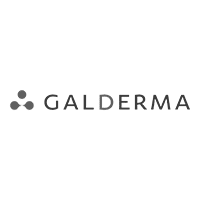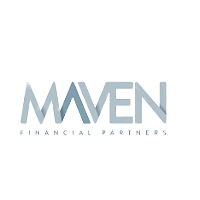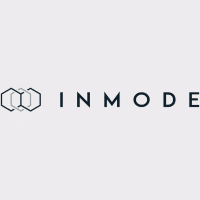
The medical aesthetics industry has witnessed significant growth in recent years, with an increasing number of people opting for non-surgical procedures such as Botox injections, dermal fillers, and laser treatments. With this growth, medical aesthetics clinics face increasing pressure to provide excellent customer service while managing high demand. One way clinics can improve customer service and boost sales is by implementing AI chatbots.
What is an AI Chatbot?
AI chatbots are computer programs that simulate human conversation, giving customers instant responses to their queries. They use machine learning algorithms to analyze customer inquiries and provide personalized answers. Implementing chatbots allows medical aesthetics clinics to improve customer service and increase sales.
Chatbots can answer frequently asked questions or FAQs and provide information about services. They can also help customers book appointments, provide post-treatment care instructions, and even send reminders about upcoming meetings. AI chatbots can improve the overall customer experience and increase sales for the clinic by streamlining these processes and providing quick, efficient assistance.
But it’s not just about convenience for the customer. Chatbots can also provide valuable insights into customer behavior and preferences, allowing clinics to tailor their services and marketing strategies better. With the ability to analyze data and track customer interactions, chatbots can help clinics identify trends and improve their overall business operations.
AI chatbots are a game-changer for the medical aesthetics industry, offering a more personalized, efficient, and effective way to engage with customers and boost sales.
Benefits of Using AI Chatbots
AI chatbots offer several benefits that can improve communication and productivity for individuals and businesses. Some of the main advantages include the following:
- Availability: AI chatbots can provide round-the-clock customer service, ensuring customers can receive assistance anytime without human intervention.
- Cost-Effective: AI chatbots can handle multiple conversations simultaneously, reducing the need for additional staff to handle customer inquiries and support. This results in significant cost savings for businesses.
- Improved Efficiency: AI chatbots can quickly analyze data and provide relevant information to customers, reducing the response time and improving overall efficiency.
- Personalized Experience: AI chatbots can be programmed to provide customized customer responses based on their preferences and past interactions. This feature can improve customer satisfaction and loyalty.
- Scalability: AI chatbots can handle unlimited conversations simultaneously, allowing businesses to scale their customer support operations without additional staff quickly.
- Reduced Errors: AI chatbots can provide accurate and consistent responses to customer inquiries, reducing the risk of errors with human agents.
AI chatbots can significantly improve business communication and productivity while providing fast and efficient customer service.
Furthermore, here are some ways AI chatbots can improve customer service and boost sales in medical aesthetics:
24/7 Availability
Among the most significant advantages of chatbots is their ability to provide round-the-clock customer service. With chatbots, customers can get instant responses to their queries anytime, even outside of regular clinic hours. This 24/7 availability can help clinics provide better customer service, leading to higher customer satisfaction rates and more repeat business.
Personalized Responses
AI chatbots use machine learning algorithms to analyze customer inquiries and provide personalized responses. Chatbots can learn about a customer’s preferences and history by analyzing past customer interactions, providing more accurate and relevant information. This customized approach can help to improve customer satisfaction rates and build customer loyalty.
Appointment Booking and Reminders
Chatbots can also be used to help customers book appointments and send them reminders. By integrating chatbots with a clinic’s appointment booking system, customers can schedule appointments quickly and easily without waiting on hold or navigating a complex booking system. Additionally, AI chatbots can send customers reminders about upcoming meetings, reducing the risk of no-shows and last-minute cancellations.
Upselling and Cross-Selling
Additionally, you can use chatbots to upsell and cross-sell products and services. By analyzing a customer’s past purchases and preferences, AI chatbots can recommend additional products or services that the customer may be interested in. This benefit can increase sales and revenue for the clinic while providing customers with a more personalized and relevant experience.
Reduced Wait Times
Long wait times can be a significant source of frustration for customers. By implementing AI chatbots, clinics can reduce wait times by giving customers instant responses to their queries. This factor can help to improve customer satisfaction rates and reduce the likelihood of customers leaving negative reviews or seeking services from competitors.
The Future of AI Chatbots in Medical Aesthetics
The future of AI chatbots in medical aesthetics is bright, as these innovative tools are increasingly being used to improve customer service and boost sales in this industry. With advancements in natural language processing nowadays, machine learning, and conversational AI, chatbots are becoming more intelligent and capable of providing personalized experiences to customers.
In addition to improving customer service, you can use chatbots to boost sales in medical aesthetics. Chatbots can help increase the likelihood of conversion and drive revenue growth by providing customers with personalized recommendations and offers. AI chatbots can also identify cross-selling and upselling opportunities, making it easier to sell complementary products and services to customers.
Overview
After exploring how AI chatbots can improve customer service and boost sales in the medical aesthetics industry, it is clear that using chatbots has numerous benefits. First and foremost, chatbots offer 24/7 availability, providing customers with immediate assistance and support at any time of the day. AI chatbots can quickly and efficiently answer common customer inquiries, freeing staff to focus on more complex issues.
Chatbots also can personalize the customer experience, offering tailored recommendations and advice based on the customer’s unique needs and preferences. This benefit can build customer loyalty and increase sales, as customers are more likely to purchase products and services they feel are specifically suited to their needs.
Using AI chatbots in the medical aesthetics industry can significantly improve the customer experience, boost sales, and increase efficiency. However, it is essential to note that chatbots should not replace human interaction entirely but instead be used as a supplement to improve customer service and support.
Final Takeaways
In conclusion, AI chatbots can be a valuable tool for medical aesthetics clinics looking to improve customer service and increase sales. By providing 24/7 availability, personalized responses, appointment booking, reminders, upselling and cross-selling, and reduced wait times, chatbots can help clinics to provide better customer experiences and build long-term customer relationships. With the increasing demand for medical aesthetics services, chatbots can help clinics to stay competitive and meet the evolving needs of their customers.
Are you interested in AI chatbots and how they can improve your venture’s customer service and boost sales in medical aesthetics? Our wonderful friends at Growth99 can help you today.




























